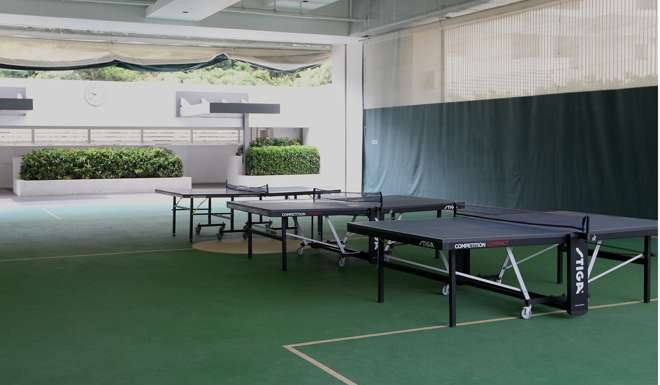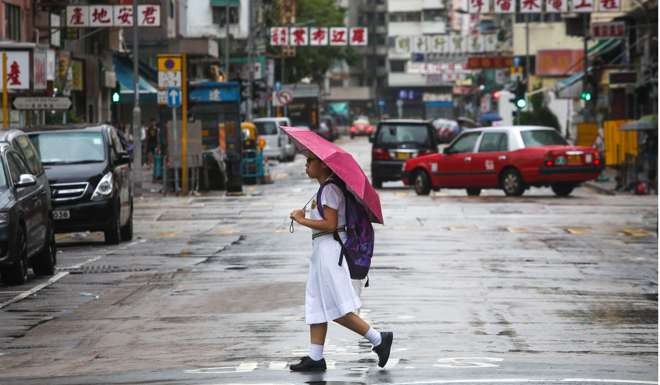
How schools can be a hub of the community in space-scarce Hong Kong
Marty Forth and Paul Yip say successful ventures abroad that combine both community and school services reveal a good way to invigorate a neighbourhood


Compounding this problem is a lack of affordable public transport, which makes it difficult for poor families to commute regularly to other areas for services they need. These support-service deserts are found around Hong Kong, especially in the northwestern areas, and even in urban districts like Sham Shui Po and Kwun Tong.
Hong Kong does not lack quality service providers; quality space is the real concern. Finding usable space to host programmes and services in the most deprived communities is a challenge. Most service providers lack the funds needed to buy or rent suitable, safe space.
Yet, there are underutilised public facilities that are practically empty almost half of the time. We are talking about schools, a perfect choice as the space is already built and designed for multipurpose use – classrooms, physical education spaces and meeting rooms. Schools are also reasonably maintained, making them safe and in working order, and they sit empty for periods of time and almost all the summer.

The co-creation of space is not a new idea. There are many successful multiple-service designs elsewhere that mirror this concept. One example is the Beacon initiative in New York, which just celebrated its 25th anniversary.
According to the city’s Department of Youth and Community Development, the centres offer “collaborative, school-based programmes that serve the wider community as well as students at the host school”. The Beacon model gets the whole community involved in promoting “positive youth development”. Today, some 80 public schools in New York have Beacon centres.
The idea that a school building can be a community’s central hub needs commitment from stakeholders
A second model can be found in the Community Schools in both Canada and the United States. These community centres differ from the Beacon centres in that they offer programmes and services during the school day, too. Community Schools are built into the school. There is a greater focus on bringing in a host of service providers to create a mosaic of services and programmes before, during and after school, as well as at weekends. The National Centre for Community Schools is a repository of resources for those wishing to start a community school.
Notably, these programmes are not an add-on to the school day, nor were they designed to create an additional burden for school staff and administrators. These programmes and services are created based on the needs of the local community, often after a community inventory exercise.
In addition, the centres are run by a chosen non-governmental organisation that works with both the local community and the school team to create programmes and services to address the most pressing needs of the community.

Services that best fit this model are social services and youth programmes which support families and individuals to be safe, healthy and productive. Educational support services, after-school child care, sports and exercises classes, and mental health counselling and support – these are just a few of the services that should be provided in school-based community centres.
From a cost-benefit vantage point, the financial input for this type of design is minor, while the benefit is notable. Additional expenses incurred would be cleaning services, and possibly school security. Both are minor costs.
Research shows that children who come to school happy, healthy and ready to learn do much better
The government could provide subsidies for non-profit service providers which can offer the programme design most needed by the community. This control allows for the ongoing measurement of outcomes and the effective assessment of risks.
There are innumerable positive outcomes for participants and communities. The use of local residents as volunteers and employees is a strong enhancement that supports the local economy with paying jobs, and helps to strengthen community bonds as people get to know one another.
In the US, studies show that the communities hosting Beacon centres have lower crime rates, better health outcomes and an increase in positive perception among residents about the city where they live. Children and community members will begin to think about school in a different way, as school buildings become enjoyable and positive places where intergenerational engagement is the norm, and not just a place for children.

Research consistently shows that children who come to school happy, healthy and ready to learn do much better – even more so when they regard the school as a positive space and not simply an inert building.
Another positive impact for these types of service designs is the use of schools during summer time, as a way to prevent or minimise summer learning loss. Often when children are home, alone or unattended, they are not engaged in activities that are cognitively and physically stimulating. Summer learning loss, a phenomenon studied most notably by the Harvard Family Research Project and the School of Education at Johns Hopkins, describes how children lose skills and knowledge during the summer due to a lack of quality engagement.
The idea that a school building can be a community’s central hub needs ownership and commitment from invested stakeholders. This calls for a sense of responsibility towards the community. In other words, the agents of change in the community must be prepared to lead.
This profound shift in thinking requires the community and the government to think differently about the traditional uses of community facilities, beyond the limited view that schools are only where teachers teach or simply where students learn.
These spaces can be reimagined as multipurpose community spaces that dramatically enhance the social environment and health of any struggling neighbourhood. It is especially beneficial for the Hong Kong schoolchildren who lack social support. Let’s make a community of a school and create a school in a community.
Marty Forth is a registered social worker in both Hong Kong and the US who has almost 20 years of experience in non-profit management, with a focus on youth, adolescents and family. Paul Yip is a professor of social work and social administration at the University of Hong Kong